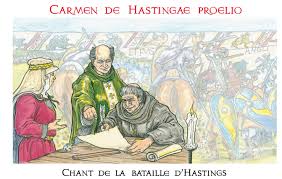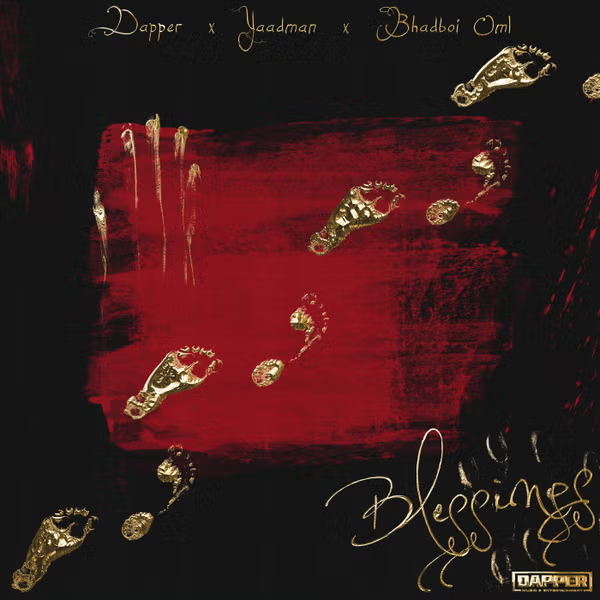
The “Song of Hastings,” also known as the Carmen de Hastingae Proelio, is an epic poem written by Bishop Guy of Amiens around 1067. It is one of the earliest written accounts of the Norman Conquest of England, specifically focusing on the Battle of Hastings in 1066. The poem is composed in Latin and consists of 835 lines of hexameters and elegiac couplets. It’s a valuable historical source that provides insights into the events leading up to the Battle of Hastings and its aftermath.
Carmen de Hastingae Proelio
The Carmen de Hastingae Proelio (“Song of the Battle of Hastings”) is a poem of approximately eight-hundred lines that survives in a single incomplete manuscript. Its authorship is attributed to Guy, Bishop of Amiens, who was an intimate of William’s court and related by blood or marriage to all the principals of the English succession. Orderic Vitalis speaks of him as composing a poem on the Battle of Hastings, “abusing and condemning Harold but praising and exalting William,” which he is said to have completed by the time he accompanied Matilda, the Conqueror’s wife, to England for her coronation as queen in May 1068.
The sympathetic treatment of Eustace, Count of Boulogne, who had become estranged from William soon after the conquest, argues for an even earler date. If the poem is a reminder of his loyal service at Hastings, the Carmen could have been written by March 1067, no more than six months after the battle, before Eustace attempted to invade Kent and fell from favor.
If so, it precedes both the work of William of Jumièges and that of William of Poitiers, whose own, more obsequious, account was written between five and ten years after the battle and probably derives from it. Though both may share a common oral tradition, it is intriguing to see how William of Poitiers, when he presents the same material, invariably exaggerates or alters events in favor of Duke William.
If William loses two horses in battle, William of Poitiers has him lose three; Harold has five hundred ships to blockade the Norman retreat, William says seven hundred. Even when the Carmen speaks of the feigned flight during the battle, in which the French pretended retreat and then turned on the pursuing English and slaughtered them, William of Poitiers has the stratagem repeated three times, this time by the Normans. Were the Carmen to have depended upon William of Poitiers, instead of otherwise, it is unlikely that Guy would have minimized the duke’s conquest, especially since he professes “to preserve the memory of his achievement throughout the ages.” (Ironically, the manuscript of the Carmen, which was written down about the year 1100, was lost only thirty years later and not rediscovered until 1826. As a result, most Anglo-Norman accounts derive from William of Poitiers.)
“Now the victor, joyful France almost ruled the field.” Guy of Amiens, himself, was French and he celebrates the role of the French contingent at Hastings as surely as William of Poitiers praises the Normans and Bishop Odo is exalted in the Bayeux Tapestry. Nor is Guy always politic in his remarks about Duke William, who is characterized as suffering from joyful expectation and then tearful despair as he waits in port for the weathercock to indicate a southerly wind. Momentarily confounded when he loses one, then another, horse in battle, William is obliged to accept Count Eustace’s own mount. He also calls upon him, and others, for aid in slaying the redoubtable Harold.
The Carmen is the only source to explain how Harold got possession of Battle Hill, a tactical advantage that William might have been expected to command. Only that morning, when his envoy returned to camp, did William learn of the king’s intention to take him by surprise on land and sea. Both leaders, in fact, seem to have been obliged to change their strategy in response to the other, and each rushed to occupy the hill. The English succeeded.
“Suddenly the forest poured forth troops of men, and from the hiding-places of the woods a host dashed forward. There was a hill near the forest and a neighbouring valley and the ground was untilled because of its roughness. Coming on in massed order–the English custom–they seized possession of this place for the battle.”
The English dismount, leaving their horses in the rear, and brace themselves for the attack. It is here that the Carmen introduces the figure of Taillefer, the only eleventh-century source to mention him, who gives heart to the disconcerted Normans. A jongleur, he rides out in front of the line, tossing his sword in the air and juggling it until an Englishman is provoked into confronting him and is killed.
The battle begins as the Norman archers release their arrows, including bolts from crossbows. But the English stand firm and
“met missile with missile, sword-stroke with sword-stroke; bodies could not be laid down, nor did the dead give place to living soldiers, for each corpse though lifeless stood as if unharmed and held its post.”
The French, who “versed in stratagems, skilled in warfare,” feign flight, drawing the English peasants after them and cutting them down, while the Normans flee in panic.
“The English people, prevailing by their number, repulsed the enemy and by their might compelled him to turn–and then the flight which had first been a ruse became enforced by valour. The Normans fled, their shields convered their backs!”
The Duke reveals himself to his men and entreats them to stand and fight. It is then that William, his horse lost from under him, kills Gyrth, the king’s brother. Another horse is seized but it, too, is killed and William fights on foot until Eustace, the leader of the French, comes to his rescue and offers William his own horse, taking another for himself.
“By the swords of both the field was cleared of English, and a number deserted, tottering and exhausted. As a waning wood falls to the stroke of the axe, so the forest of English-men was brought to nothing.”
Finally, the king, himself, is sighted and, perhaps already blinded by the arrow depicted in the Bayeux Tapestry, hacked to death. Later, Harold’s mother entreats William for the body of her mutilated son and offers to ransom its weight in gold. But William refuses and, in a remarkable re-enactment of pagan rite, commands that the dismembered corpse be wrapped in purple linen and buried on the summit of a cliff, there to rest as guardian over sea and shore.
Like the Carmen, the Vita Ædwardi Regis (“Life of King Edward”) is anonymous and survives in a single incomplete manuscript that dates to about 1100. Likely commissioned by Queen Edith, “the illustrious mistress whom we chiefly serve in this present account,” to justify her family’s succession of the throne, the manuscript consists of two parts. The first recounts the deeds of her family, her husband the king, her father Earl Godwin, and her brothers Harold and Tostig. It ends with the death of the king and probably was written about the same time (late 1065-1066), there being no point in writing it after William had secured the throne.
For the author of the Vita, the quarrel between Harold and Tostig was fatal to the Godwin family and the country, itself.
What historical events does the Song of Hastings reference?
The Song of Hastings (Carmen de Hastingae Proelio) references several key historical events related to the Norman Conquest of England in 1066. Here are some of the main events mentioned in the poem:
- The Battle of Hastings: The central focus of the poem is the Battle of Hastings, which took place on October 14, 1066. This battle was a decisive conflict between the Norman-French army of William, Duke of Normandy, and the English army under King Harold II.
- The Death of King Harold II: The poem describes the death of King Harold II, who was killed during the Battle of Hastings. His death marked the end of Anglo-Saxon rule in England and the beginning of Norman rule.
- The Siege of London: The poem also references the siege of London by the Norman forces after their victory at Hastings. This event was part of William’s efforts to consolidate his control over England.
- The Role of Key Figures: The poem mentions several important figures involved in the Norman Conquest, including William the Conqueror, Duke of Normandy, and his allies from various regions such as Ponthieu, Boulogne, and Brittany.
- The Coronation of William I: The poem likely celebrates the coronation of William I as the King of England on Christmas Day, 1066. This event symbolized the official beginning of Norman rule in England.
The Song of Hastings provides a vivid account of these events and offers insights into the political and military strategies employed during the Norman Conquest.
What led to the Norman Conquest of England?
The Norman Conquest of England in 1066 was driven by a combination of political, personal, and military factors:
- Succession Crisis: The death of King Edward the Confessor in January 1066 left a power vacuum. Edward had no direct heir, and his lack of a clear successor led to multiple claims to the English throne.
- William’s Claim: William, Duke of Normandy, claimed that Edward had promised him the throne and that Harold Godwinson, who was crowned king after Edward’s death, had sworn an oath to support William’s claim. This claim was a significant factor in William’s decision to invade England.
- Harold’s Oath: Harold Godwinson, the newly crowned king, was seen as having broken his oath to William by taking the throne for himself. This betrayal further justified William’s invasion in his eyes.
- Political Alliances and Rivalries: The complex web of political alliances and rivalries in Europe played a role. William had the support of the Pope and other powerful allies, while Harold had to deal with threats from other regions, including the Norwegian invasion led by Harald Hardrada.
- Military Preparation: William meticulously prepared for the invasion, assembling a large and well-equipped army. His forces included not only Normans but also troops from other regions such as France, Flanders, and Brittany.
- Battle of Hastings: The decisive moment came with the Battle of Hastings on October 14, 1066. William’s forces defeated Harold’s army, and Harold was killed in the battle. This victory allowed William to claim the English throne and begin his reign as William I, also known as William the Conqueror.
The Norman Conquest had profound and lasting impacts on England, including changes in governance, land ownership, and culture. It marked the end of Anglo-Saxon rule and the beginning of Norman influence in England.
How did the Norman Conquest change English society?
The Norman Conquest of England in 1066 brought about significant changes to English society, reshaping various aspects of life, governance, and culture. Here are some key ways in which English society was transformed:
1. Political and Administrative Changes
The Norman Conquest led to the replacement of the Anglo-Saxon elite with a new Norman aristocracy. William the Conqueror centralized power and wealth, creating a more hierarchical society. The feudal system was introduced, where land was granted in return for military service, establishing a structured hierarchy of lords and vassals.
2. Land Redistribution
William confiscated the estates of Anglo-Saxon nobles and redistributed the land to his Norman followers. This created a new ruling class and altered the ownership and management of land in England. The Domesday Book, a comprehensive survey commissioned by William, documented the extent of this land redistribution.
3. Cultural and Linguistic Influence
The Normans brought their language, culture, and customs to England. French became the language of the court, administration, and culture, leading to a significant influx of French words into the English language. Many English towns acquired French names, and French first names became popular.
4. Architectural Changes
The Normans introduced Romanesque architecture, characterized by rounded arches, barrel vaults, and thick walls. They built impressive stone castles, churches, and monasteries throughout England, which served as symbols of Norman power and dominance.
5. Legal and Judicial Reforms
The Normans centralized the legal system, establishing royal courts and appointing sheriffs to enforce the law in the shires. They introduced new legal concepts and terms, many of which are still in use today. The feudal system also influenced the development of English common law.
6. Social Structure
The Norman Conquest fundamentally altered the social structure of England. The Anglo-Saxon elite was replaced by Norman nobles, and the feudal system created a more rigid and hierarchical society. This led to a concentration of power and wealth in the hands of a few, while the majority of the population became peasants working on their lord’s estates.
7. Economic Impact
The conquest and subsequent campaigns, such as the harrying of the north, devastated large areas of England. The redistribution of land and the introduction of the feudal system also had long-term economic effects, shaping the agricultural and economic landscape of the country.
The Norman Conquest had a profound and lasting impact on English society, influencing its political, social, cultural, and economic structures. The changes brought about by the Normans laid the foundation for the development of medieval England and left a lasting legacy that is still evident today.



















